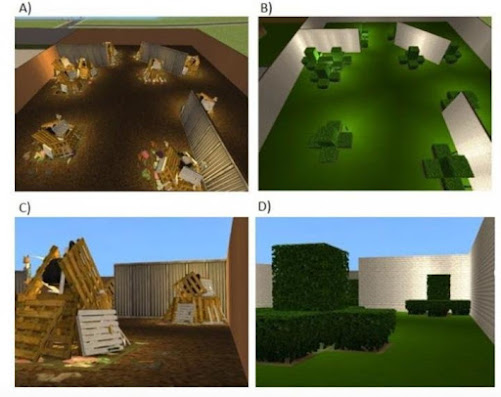Blog #6 : Visual

This image depicts an experiment conducted by Anne Cleary and her research team. In this experiment Cleary and her team created a virtual reality simulation that consisted of different types of scenes such as a junkyard and a hedge garden (see above picture). These scenes were spatially mapped to resemble scenes that were previously witnessed by the participants in this experiment. The participants went through each scene and were asked if they had experienced any sort of déjà vu, and they stated they did with the scenes that were spatially mapped to resemble the previous scene. I explain this case in my paper and will include it in my presentation as well, so the readers and viewers can visually understand the experiment. This experiment is a good example of how déjà vu can be explained by the implicit memory theory.

